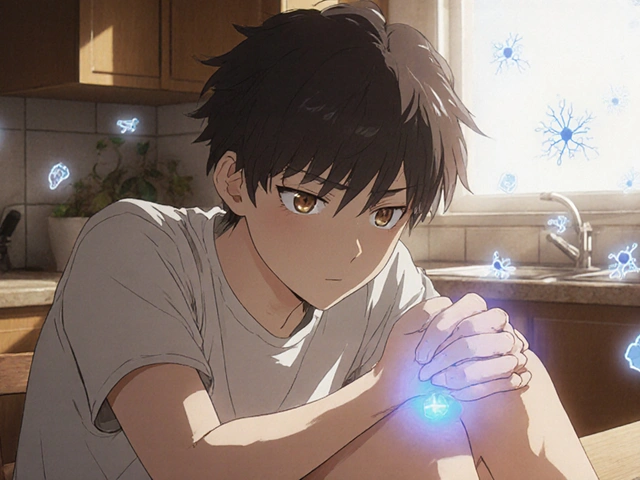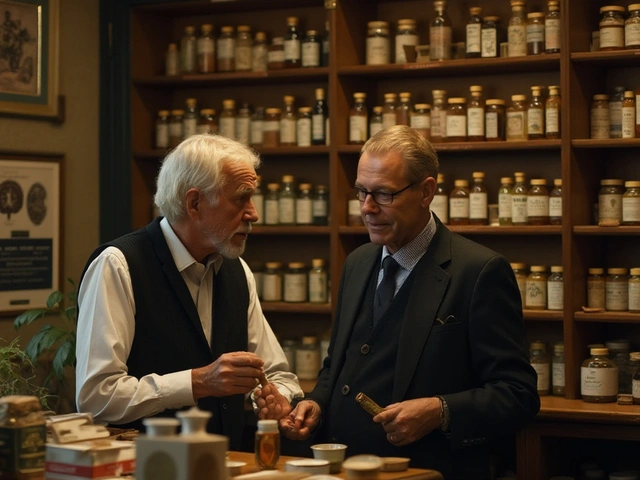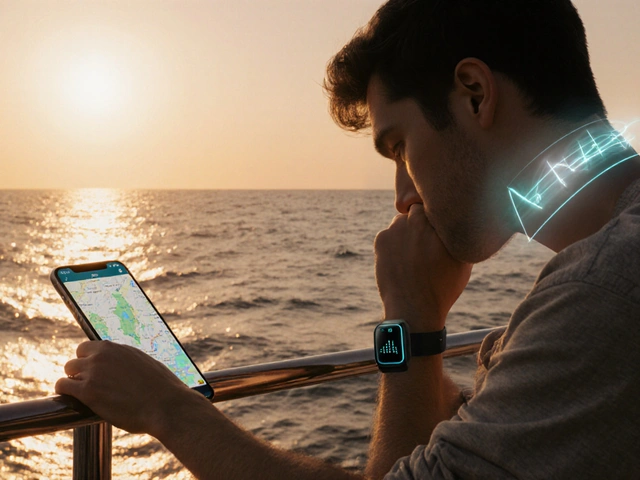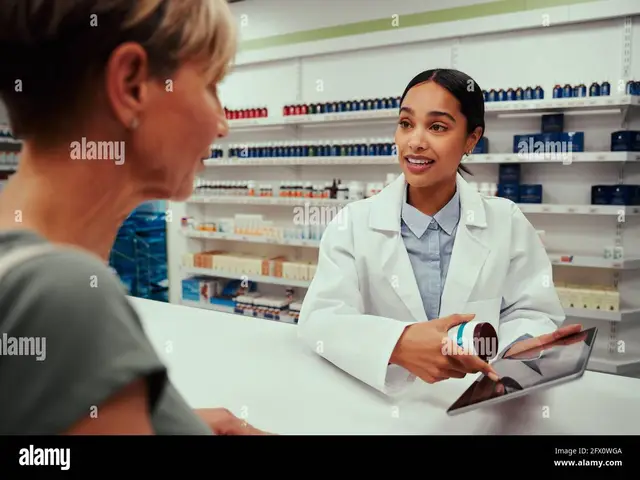
Every year, millions of people take generic medicines because they’re affordable, effective, and widely available. But what if the bottle in your hand isn’t what it claims to be? Counterfeit generic drugs are a growing threat - not just in far-off countries, but right in your local pharmacy. The World Health Organization estimates that up to 10% of medicines worldwide are fake, and in some regions, that number climbs to 30%. These aren’t just poor-quality copies. Some contain no active ingredient. Others have too much - or the wrong - drug inside. The result? Treatment failure, dangerous side effects, and even death.
Why Generic Medicines Are Targeted
Generic drugs make up 90% of prescriptions in the U.S., but they account for only 22% of total drug spending. That’s because they’re cheap. And that’s exactly why counterfeiters love them. Branded drugs like Lipitor or Nexium have strong packaging, clear serial numbers, and advanced security features. Generic manufacturers, especially smaller ones, often cut corners to stay competitive. They skip expensive security inks, skip serialization, or use generic labels that look close enough to fool the eye.Pharmacists report that verifying generics is 3 times harder than verifying branded drugs. Why? Because there’s no consistent standard. One generic metformin might have a hologram. Another might have a UV mark. A third might have nothing at all. Without a reference sample or a reliable database, how are you supposed to know?
The Three Layers of Verification
Real verification isn’t about one trick. It’s about layers. Think of it like a lock with three tumblers - you need all three to open it.Layer 1: Overt Features - What You Can See
These are the obvious signs: color-shifting ink, holograms, raised text, special fonts. Pfizer’s Viagra uses Optically Variable Ink that shifts from green to blue when tilted. Johnson & Johnson’s Tylenol uses microtext only visible under magnification. These features are meant for patients and pharmacists to spot at a glance. But here’s the catch: modern counterfeiters can replicate these with 80-90% accuracy. INTERPOL’s 2021 Operation Pangea found that fake packaging now often looks flawless to the naked eye. A pharmacist on Reddit spotted a fake Nexium generic because the expiration date font was slightly thinner. That’s the kind of detail you need to train your eye for.
Layer 2: Covert Features - What You Need a Tool For
These are hidden clues. UV inks glow under a $15 blacklight. RFID tags beep when scanned with a handheld reader. Chemical taggants like Lumilink® are invisible unless you use a $300 handheld detector. These are harder to copy because counterfeiters don’t know what to look for. But they’re useless if you don’t have the tools. Most community pharmacies don’t carry UV lights or scanners. Hospitals and large chains do - but even then, staff need training. A 2023 Drug Topics survey found pharmacists using handheld spectrometers reported 94% satisfaction - but only 12% of independent pharmacies have access to them.
Layer 3: Track-and-Trace - The Digital Trail
This is the backbone of modern drug safety. Every package gets a unique serial number following the GS1 standard. In the U.S., the Drug Supply Chain Security Act (DSCSA) requires this for all prescription drugs by November 2023. In the EU, the Falsified Medicines Directive (FMD) has required it since 2019. The system works like this: when you scan the barcode, it checks against a central database. If the serial number is valid and hasn’t been used before, the drug is real. The European system handles over 2.5 billion verifications a year with 99.998% uptime. Sounds perfect, right? Not so fast. A 2023 study found that barcode scanning fails 40-50% of the time with generics. Why? Because many generic manufacturers don’t serialize properly. Or they use inconsistent formats. Or their database isn’t linked. In Nigeria, mobile verification apps work only 65% of the time due to poor internet. So even the best digital system fails without reliable data.
How Professionals Detect Fakes in the Lab
When visual checks and barcodes aren’t enough, labs turn to science. Two tools dominate: NIR and Raman spectroscopy.NIR Spectroscopy
Handheld devices like the Thermo Fisher TruScan® RM use near-infrared light to measure how a tablet absorbs energy. Every drug has a unique chemical fingerprint. If the active ingredient is wrong, or the coating is off, the machine knows. It’s fast - 10 to 30 seconds per test - and accurate 92-97% of the time. A 2020 study used NIR to catch fake Plavix generics by spotting moisture differences invisible to the eye. It’s the gold standard for field use because it doesn’t destroy the sample and works through packaging.
Raman Spectroscopy
This tool, like the B&W Tek NanoRam®, uses laser light to detect molecular vibrations. It’s great for identifying specific chemicals. But it struggles with dark-colored pills because the dye interferes with the signal. It’s also more expensive and heavier than NIR. Still, when it works, it’s powerful. One pharmacist in Ohio used a NanoRam® to catch fake metformin that looked identical to the real thing. The fake had the wrong salt form - a detail that could’ve killed a diabetic patient.
These machines cost $15,000 to $50,000. Hospitals can afford them. Small pharmacies? Not so much. That’s why the FDA recommends starting simple: a UV light, a magnifying glass, and a reference sample from the manufacturer.
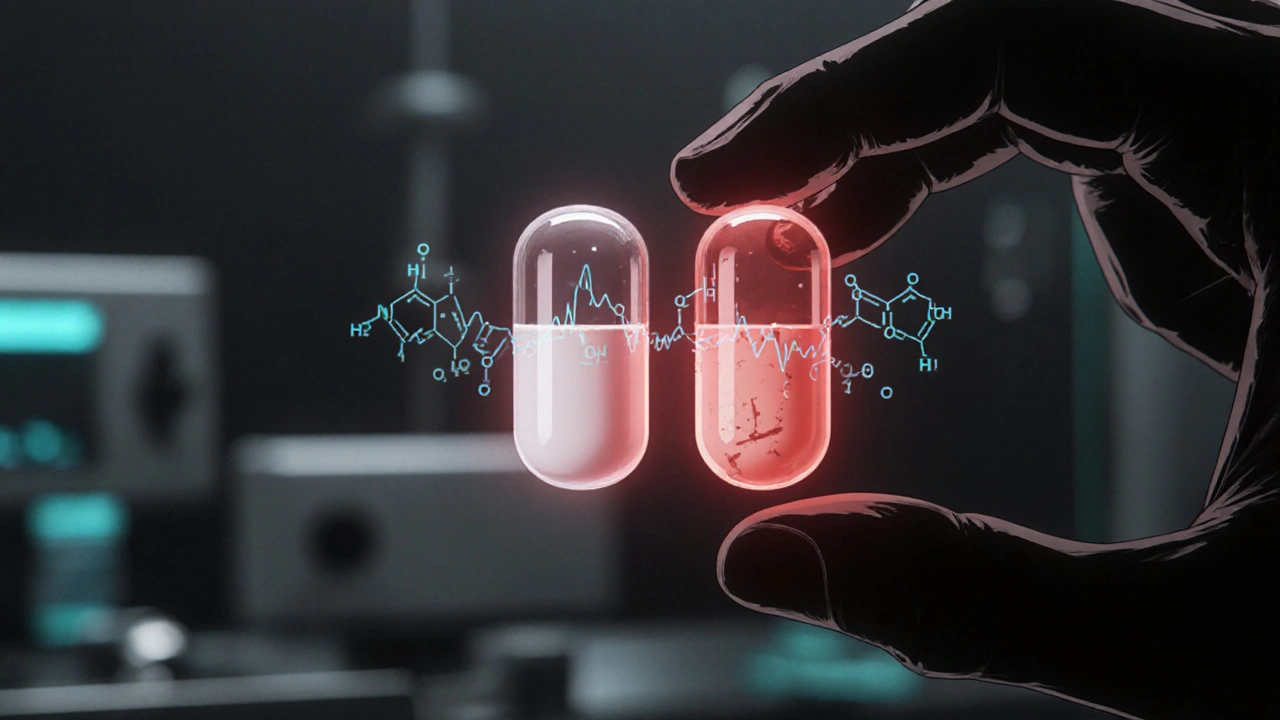
What Works Best - The Data Says
No single method catches everything. But combining them? That’s where the real protection lies.A 2023 study in the Journal of Pharmaceutical Analysis found that using both overt features and spectroscopy together caught 98.7% of counterfeits. Single-method approaches only caught 82.4%. That’s a huge gap.
Here’s what experts agree on:
- Dr. Paul Newton (Oxford): “Track-and-trace reduces wholesale counterfeiting - but 80% of clinics in Africa can’t use it.”
- Dr. Maria Kresal (EDQM): “Packaging can be copied with 95% accuracy. You must test the medicine inside.”
- U.S. FDA: “No single method gives 100% protection. Use a layered approach.”
Bottom line: If you’re a pharmacist, don’t rely on the hologram. Don’t trust the barcode alone. Use visual checks, then confirm with a spectrometer if you can. If you’re a patient, know the signs.
What Patients Can Do
You don’t need a lab to protect yourself. Here’s what you can do:- Check the packaging. Is the font different? Is the color slightly off? Is the expiration date smudged?
- Compare your current bottle to the last one. Even small changes in label layout matter.
- Ask your pharmacist: “Is this the same generic as before?” If they hesitate, ask why.
- Don’t buy from online pharmacies that don’t require a prescription. The FDA warns 96% of these sites are illegal.
- Report anything suspicious. Use the FDA’s MedWatch program or your local health department.
One woman in Texas noticed her generic blood pressure pill tasted bitter. The real one didn’t. She called her pharmacist. It turned out to be a fake batch with no active ingredient. She saved herself from a stroke.
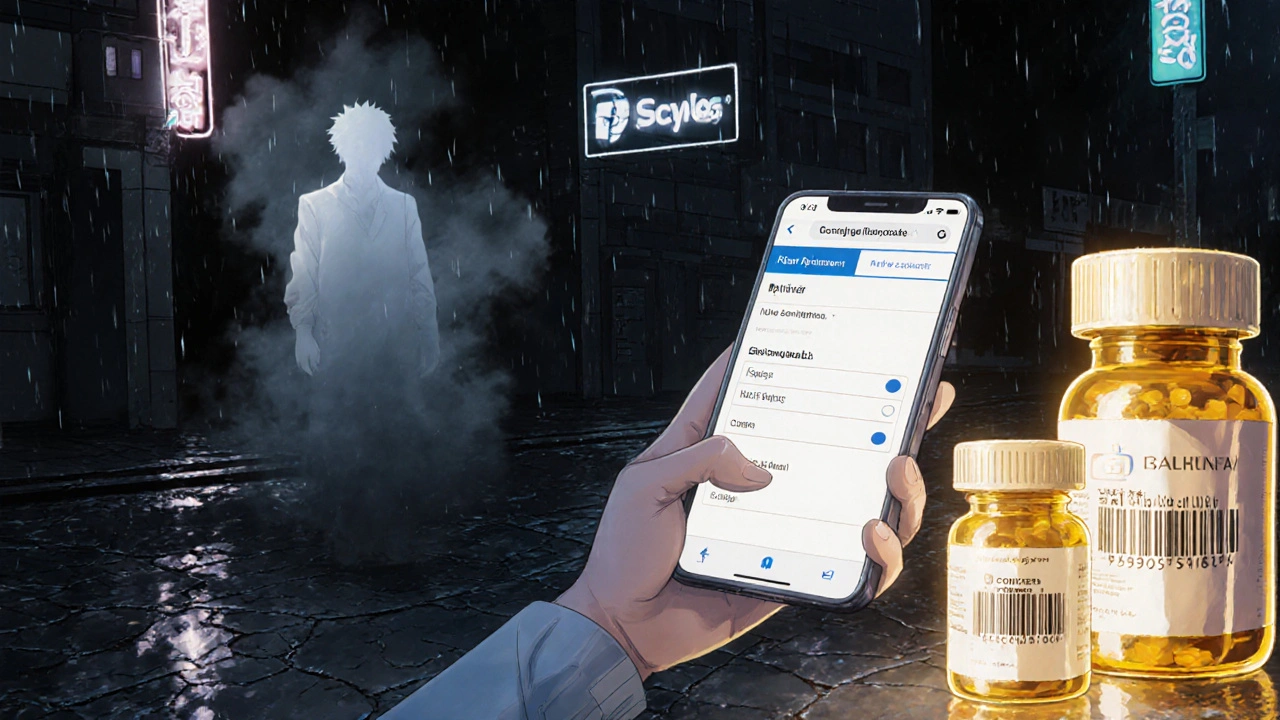
The Future: AI, Blockchain, and Global Standards
The fight against fake drugs is evolving. The FDA is testing blockchain systems to track generics through every step of the supply chain. Early results show 99.2% accuracy. The EU will require cryptographic 2D barcodes on all generics by January 2025. By 2026, the U.S. aims to serialize 100% of generics.But technology alone won’t fix this. The real problem is inequality. Rich countries have labs and scanners. Poor countries have nothing. As long as counterfeiters can profit in places with weak oversight, the problem won’t disappear. The WHO says global cooperation is essential - no single country can solve this alone.
For now, the best defense is awareness. Know your medicine. Question inconsistencies. Demand transparency. Because when it comes to your health, you can’t afford to guess.
How can I tell if my generic medicine is fake?
Start with a visual check: look for differences in font, color, packaging texture, or expiration date formatting. Compare it to your last bottle. Use a UV light to check for hidden marks. If the pill looks, smells, or tastes different, or if the bottle feels cheap, be suspicious. Always ask your pharmacist to verify the source. If you’re unsure, report it to the FDA’s MedWatch program.
Are all generic drugs safe?
Yes - if they’re authentic. Generic drugs approved by the FDA or equivalent agencies are required to be bioequivalent to the brand-name version. But counterfeit generics - the ones made illegally - are not. These fake products can contain no active ingredient, the wrong ingredient, or toxic fillers. The problem isn’t the generic label - it’s the lack of oversight in the supply chain. Stick to licensed pharmacies and avoid unregulated online sellers.
Why don’t all generic manufacturers use security features?
Cost. Generic drugs are sold at low margins, and adding holograms, UV inks, or serialization adds 1.2-1.8% to production costs. Many manufacturers, especially smaller ones, skip these features to stay competitive. Branded drugs invest more because they have higher profits and stronger brand protection. Regulatory pressure is increasing - the U.S. aims for 100% serialization by 2026 - but until then, inconsistency remains a major problem.
Can I trust barcode scanners on my phone for generic drugs?
Not always. While barcode scanners work well for branded drugs with consistent serialization, they fail 40-50% of the time with generics. Many generic manufacturers don’t follow GS1 standards properly, or their databases aren’t updated. Network issues in rural areas also cause failures. Use scanners as a first check - never as the only one. Always combine with visual inspection and, if possible, professional verification tools.
What should I do if I suspect a fake medicine?
Don’t take it. Return it to the pharmacy immediately. Ask them to contact the manufacturer or distributor. Report the incident to the FDA’s MedWatch program at fda.gov/medwatch or by calling 1-800-FDA-1088. Provide the product name, lot number, expiration date, and where you bought it. Your report could help stop a dangerous batch from reaching others.
What’s Next for You
If you’re a patient: Keep your eyes open. Compare bottles. Ask questions. Don’t be afraid to push back if something feels off.If you’re a pharmacist: Start with the basics - UV light, magnifier, reference samples. Advocate for access to handheld spectrometers. Push for better training and standardized labeling across generics.
If you’re a policymaker or manufacturer: Invest in serialization. Support small producers. Push for global standards. The cost of inaction is measured in lives.
Generic medicines saved billions in healthcare costs. But they can’t do that if they’re fake. Verification isn’t optional - it’s essential.
